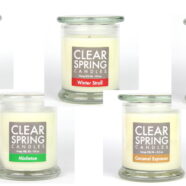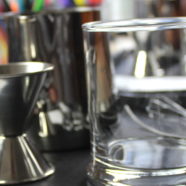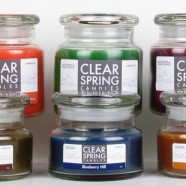Year-End Soy Candle Sale!
Take 10% off of our entire selection of hand-poured soy jar candles.
Read MoreAll fall scents 20% off!
Save today on Harvest Spice, Pumpkin Pie Spice and Warm Apple Cider.
Read MoreBook a Candle Pouring Party today!
Step beyond buying a candle – and experience making one! A fun and creative time with friends, family or coworkers.
Read MoreWelcome to the online home of Clear Spring Candles!
Our user-friendly layout makes it easy for you to browse our full inventory of candles and tarts.
Read MoreWhat’s in a wax? A closer look at a candle’s main ingredient
If we were launching a new line of candles a couple thousand years ago, around the time when candles were invented, our ads might say “Check out our new line of whale fat candles!” or “Enjoy the warm glow of tallow!” (Tallow is beef or mutton fat.) But thankfully, much progress has been made over the centuries when it comes to the base ingredients we use in candlemaking. Today, consumers have a wide array of options, with paraffin and soy being two of the most popular. As consumers often approach us with questions about the differences between these and other types of wax, we thought it may be helpful to give an overview of some common waxes. Paraffin Wax is one of the most commonly poured candle waxes today. Paraffin is a byproduct of the crude oil refinement process. For that reason, it often gets a bad rap, and is frowned upon by some who scoff at the idea of burning such a substance. However, if made correctly, paraffin candles burn cleanly and beautifully. It’s also important to note that because paraffin is a byproduct, candles provide a use for something that would otherwise be discarded. Soy Wax is made from soybeans and/or soybean oil. Some “soy blends” may include other all-natural ingredients such as coconut oil, palm wax or beeswax. I’m often asked if soy candles are soot-free. Though they’re sometimes marketed as such, this is misleading – as soot is always produced as a result of the combustion process when a carbon-based substance is burned. If made improperly, such as with the wrong wick or with too much fragrance oil, soy candles can give off as much or more soot than other types of candles. Palm Wax is an all-natural wax derived from palm oil. It’s characterized by the attractive crystalline look it creates after the wax hardens in a candle mold or container. Beeswax is, as its name would suggest, a yellow-to-golden colored wax produced by honeybees, which use it to incubate their larvae within honeycombs. Straight beeswax typically smells sweet like honey, and is a harder wax with a higher melting point. It can also be used as an additive to harden paraffin wax. Beeswax is known for a cleaner burn than many other waxes. Not to get all scientific on you, but most wax types come in a variety of melting points. Wax with a lower melting point is commonly used in container candles, as it’s typically soft and adheres well to the side of a jar. Pillars and votives are often made with wax of a higher melting point, which is usually harder and, as such, tends to shrink more upon cooling. That can help candles release easier from molds. Knowing more about these common waxes will help you choose the candles that are right for...
Read More






